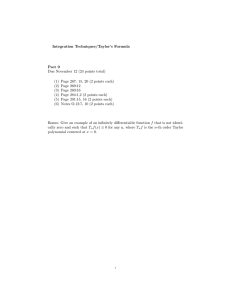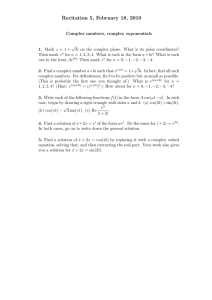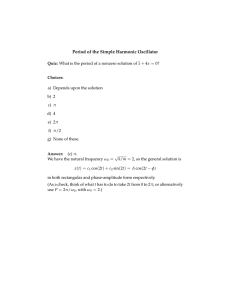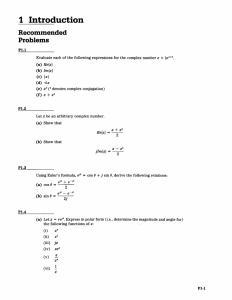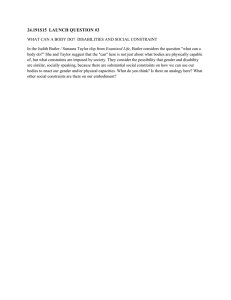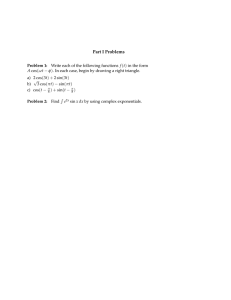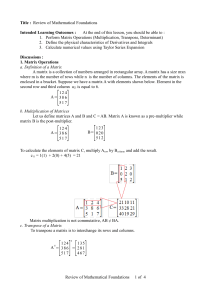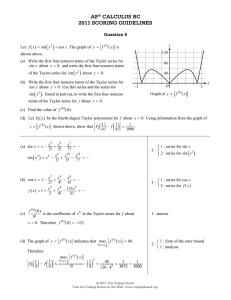Taylor’s Formula
advertisement
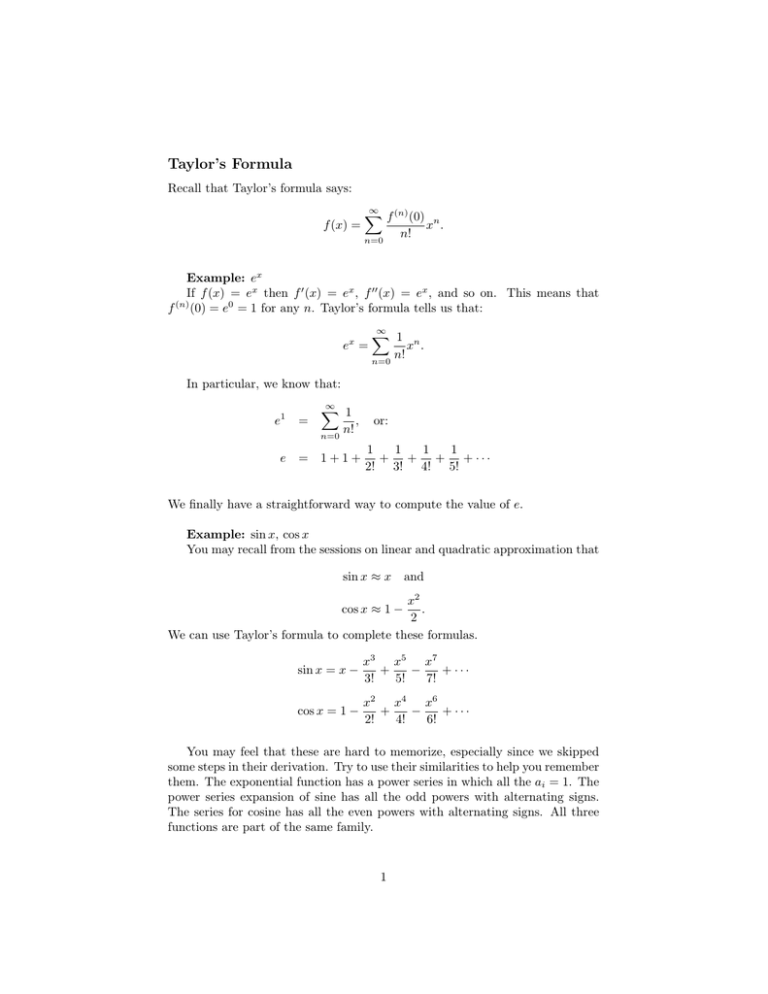
Taylor’s Formula Recall that Taylor’s formula says: f (x) = ∞ � f (n) (0) n x . n! n=0 Example: ex If f (x) = ex then f � (x) = ex , f �� (x) = ex , and so on. This means that (n) f (0) = e0 = 1 for any n. Taylor’s formula tells us that: ex = ∞ � 1 n x . n! n=0 In particular, we know that: e1 = ∞ � 1 , n! n=0 e = 1+1+ or: 1 1 1 1 + + + + ··· 2! 3! 4! 5! We finally have a straightforward way to compute the value of e. Example: sin x, cos x You may recall from the sessions on linear and quadratic approximation that sin x ≈ x and x2 . 2 We can use Taylor’s formula to complete these formulas. cos x ≈ 1 − sin x = x − x3 x5 x7 + − + ··· 5! 7! 3! cos x = 1 − x2 x4 x6 + − + ··· 4! 2! 6! You may feel that these are hard to memorize, especially since we skipped some steps in their derivation. Try to use their similarities to help you remember them. The exponential function has a power series in which all the ai = 1. The power series expansion of sine has all the odd powers with alternating signs. The series for cosine has all the even powers with alternating signs. All three functions are part of the same family. 1 MIT OpenCourseWare http://ocw.mit.edu 18.01SC Single Variable Calculus�� Fall 2010 �� For information about citing these materials or our Terms of Use, visit: http://ocw.mit.edu/terms.
